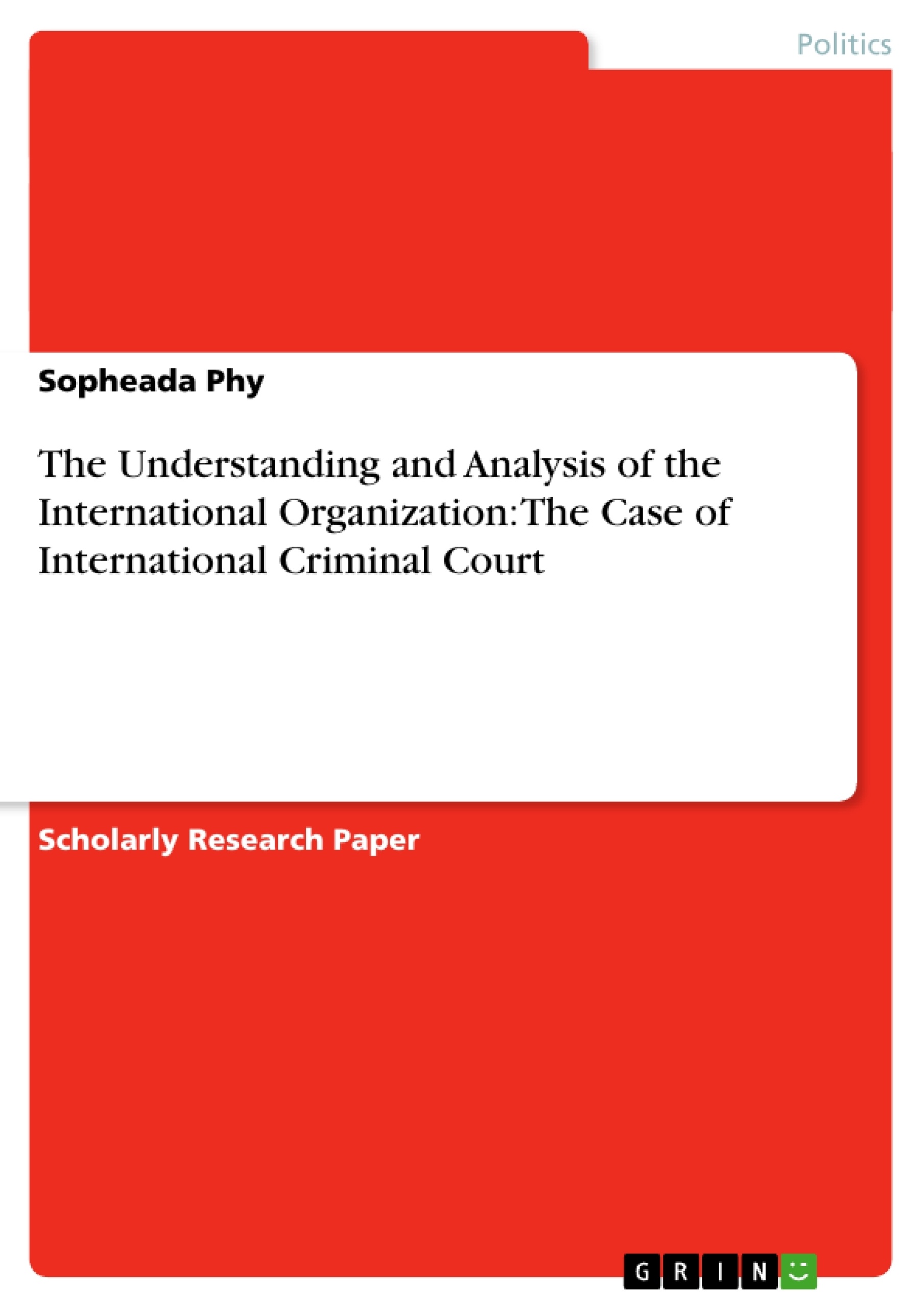Archer (2001) defines international organization as “a formal, continuous structure established by agreement between members (governmental and/or non-governmental) from two or more sovereign states with the aim of pursuing the common interest of the membership” (p. 33). Also, the international organization has three main characteristics—membership, aim, and structure. It should have at least two sovereign states as members, with the aim of pursuing common interest of the members, and has a formal structure established by an agreement officially adopted by all the members (Archer 2001). Taking the International Criminal Court (ICC) into consideration, it meets all the above criteria, so it can be regarded as an international organization. The following will address and analyze the genesis, aim, membership, structure, work, and challenges of the ICC.
Inhaltsverzeichnis (Table of Contents)
- Introduction
- The Genesis of the ICC: When, Why and How?
- The Aim of the ICC
- Membership
- The Structure of the ICC
- Assembly of States Parties
- The Presidency
- Judicial Divisions
- Office of the Prosecutor
- The Registry
Zielsetzung und Themenschwerpunkte (Objectives and Key Themes)
This research paper examines the International Criminal Court (ICC) as an international organization, analyzing its genesis, purpose, membership, structure, operations, and challenges. The paper delves into the ICC's historical development, highlighting the key events and actors that led to its establishment. It also explores the ICC's mandate, including its jurisdiction over specific crimes and the complementary nature of its role in relation to national jurisdictions.
- The historical development and establishment of the ICC
- The ICC's mandate and jurisdiction over international crimes
- The structure and functions of the ICC's various organs
- The ICC's membership and the challenges it faces in achieving its objectives
- The role of the ICC in addressing international crimes and promoting justice.
Zusammenfassung der Kapitel (Chapter Summaries)
- Introduction: This section defines the concept of an international organization and outlines the key characteristics that define the ICC as such. It sets the stage for the paper's analysis by highlighting the ICC's genesis, aim, membership, structure, work, and challenges.
- The Genesis of the ICC: When, Why and How?: This section delves into the historical development of the ICC, tracing its origins back to the 19th century and highlighting the key events and actors that shaped its creation. It explores the various attempts to establish a permanent international criminal court, including the proposals following the Franco-Prussian War, World War I, and World War II. It also examines the establishment of the ad hoc tribunals for the former Yugoslavia and Rwanda, which ultimately underscored the need for a permanent court.
- The Aim of the ICC: This section analyzes the ICC's primary objective, which is to prosecute individuals guilty of the most serious crimes of concern to the international community. It examines the specific crimes under the ICC's jurisdiction, namely genocide, crimes against humanity, war crimes, and the crime of aggression. It also explores the ICC's territorial jurisdiction, including its ability to exercise jurisdiction over individuals who are nationals of state parties, or when crimes are committed within the territory of a state party.
- Membership: This section discusses the ICC's membership, which currently includes 108 states parties bound by the Rome Statute. It highlights the geographical distribution of state parties and mentions the withdrawal of signatures from the Rome Statute by the United States and Israel.
- The Structure of the ICC: This section provides a detailed overview of the ICC's structure, outlining the four main organs: the Assembly of States Parties, the Presidency, the Judicial Divisions, the Office of the Prosecutor, and the Registry. It explains the functions and responsibilities of each organ, including their roles in legislation, administration, judicial proceedings, investigations, and court management.
Schlüsselwörter (Keywords)
This research paper focuses on the International Criminal Court (ICC), examining its role as an international organization. Key terms and concepts explored include international organization, international crimes, genocide, crimes against humanity, war crimes, crime of aggression, Rome Statute, state parties, jurisdiction, complementary jurisdiction, structure, organs, Assembly of States Parties, Presidency, Judicial Divisions, Office of the Prosecutor, Registry, and challenges.
- Quote paper
- Sopheada Phy (Author), 2009, The Understanding and Analysis of the International Organization: The Case of International Criminal Court, Munich, GRIN Verlag, https://www.grin.com/document/149252
-

-

-

-
Upload your own papers! Earn money and win an iPhone X. -

-
Upload your own papers! Earn money and win an iPhone X. -

-
Upload your own papers! Earn money and win an iPhone X. -

-
Upload your own papers! Earn money and win an iPhone X. -

-
Upload your own papers! Earn money and win an iPhone X. -

-
Upload your own papers! Earn money and win an iPhone X.

